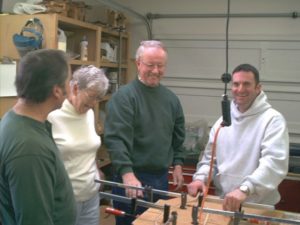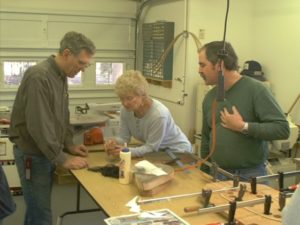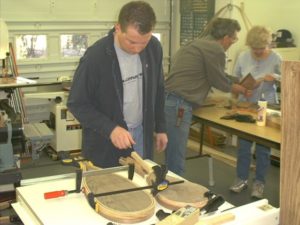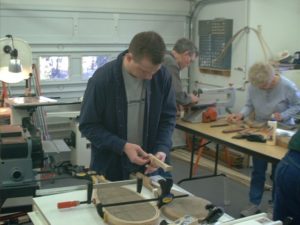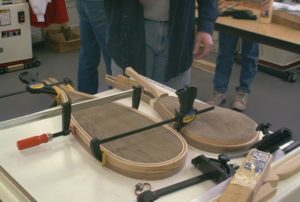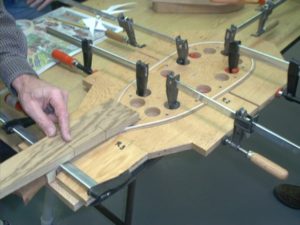The GBF Custom Landing Net Workshops |
|
By Art Hawkins For the past 23 years, Michael Kaul and I have conducted annual laminated net building clinics in my Orangevale shop. GBF members have built 502 nets to date. We are planning to run six clinics again in 2025. Clinics have three sessions lasting two to three hours each, with four participants. Sessions, which start in February, will occur on weekday evenings and occasionally on a Saturday. If you want to build a net, sign-ups are on the GBF website members calendar. Click on “Net Clinic” on the first of the month for November, December, and January in the GBF calendar. This is a signup link only, not a clinic date. Follow the registration directions provided which include indicating whether or not you are a first-time net builder or a Golden Trout participant, as signup preference is given to these members. In January, Michael and I compare calendars and come up with the 18 dates and times (3 sessions x 6 clinics) we are both available to run the sessions. Michael will call each applicant in January and advise them of the clinic dates. Members MUST attend all three dates of the clinic they sign up to attend, there are no make-up sessions. About the Clinics At the first session, participants select the net style they want to build and their choice of hardwoods for the handle and the varieties for the laminated strips. Next they bend the pre-soaked wood strips and clamp them to dry. This session takes about 2 hours. The second session is for gluing the strips and handle and takes about 2 hours. The third session takes about 3 hours. Participants scrap off any excess glue before I machine the nets to the proper thickness and cut the grove for the net string. Then participants drill the holes to sew the net bag to the net frame. I operate all the power equipment, so no woodworking experience is required. At the conclusion of the third session, participants leave with a wooden net frame, a net bag and the finishing oil. The frame needs to be finish sanded, sealed with Tru-oil or Spar Varnish and the net bag sewn to the frame. The total cost of materials is between $30 and $50 depending on the options selected. If purchased at a fly shop, similar nets cost $100 to $200 or more. ________________________________________ |
| The photos below show attendees and Art Hawkins (who owns the workshop) doing just that. Instructor Mike Kaul provided the knowledge and techniques, Art supplied the power tool expertise, and everyone had a great time. The resulting nets are first-class fishing instruments and beautiful works of art! | ||||||
|
